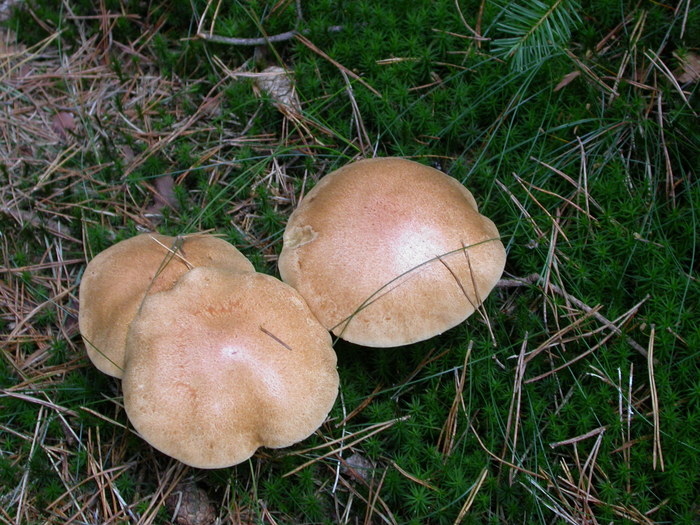
I like the color transition in this photo... dark greens in the upper right to gray-browns in the lower left. And of course, the pinkish-tan Suillus as the centerpiece.

I like the color transition in this photo... dark greens in the upper right to gray-browns in the lower left. And of course, the pinkish-tan Suillus as the centerpiece.
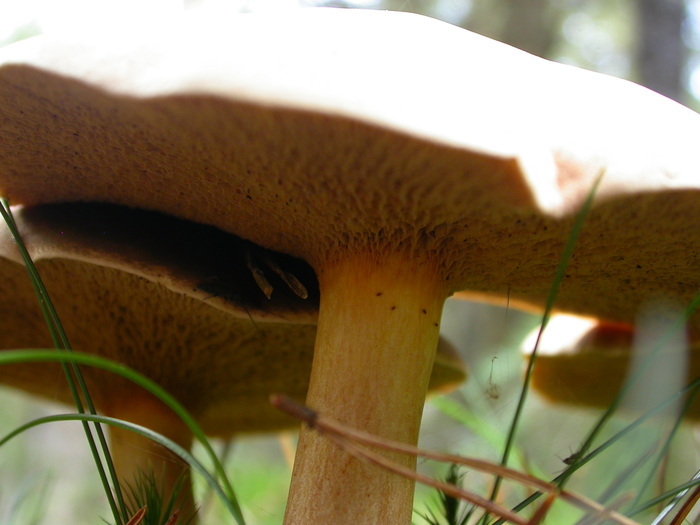
A peek under the cap shows a smooth stalk with no ring, and the wide yellow pores which I associate with typical slippery jacks. The book shows many of the Dutch Suillus as being gray-pored though. Of the yellow-pored ones, only Suillus bovinus lacks a ring and tends toward pinkish rather than orange in its cap color.
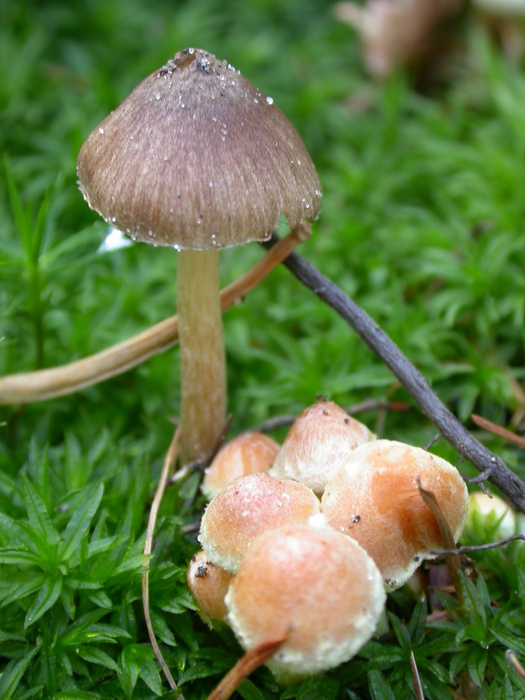
Another shot of the Hypholomas, with another mushroom in the back... probably an Inocybe, possibly Inocybe flocculosa, but possibly a Conocybe or Panaeilus.
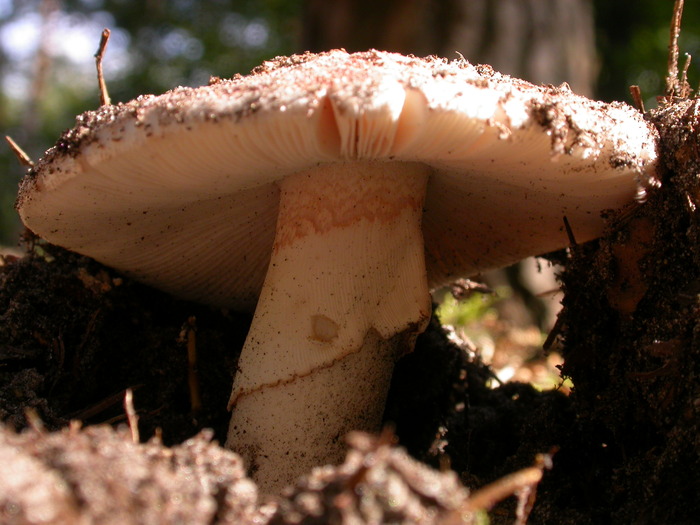
Another Amanita with a pink persuasion... possibly A. rubescens. I just like the way the elements of the shot piece together.
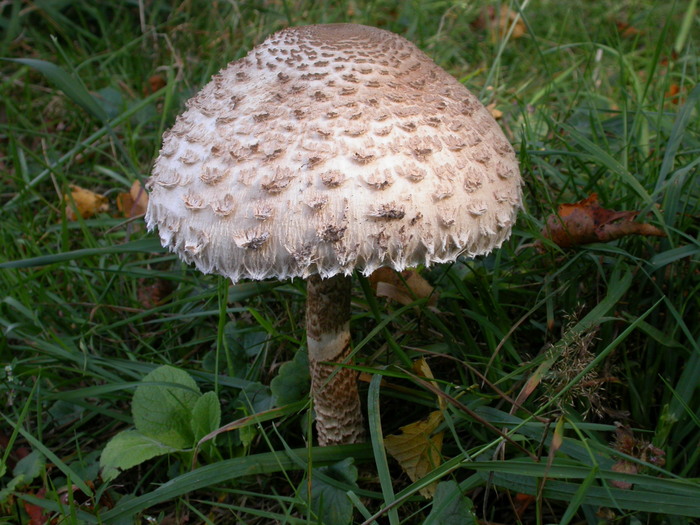
It's a bit difficult to give perspective in these pictures, but this mushroom is about a foot tall. This is a typical size for Macrolepiota procera. They are also quite edible, but of course this one is safe to spread its spores in the Veluwe.
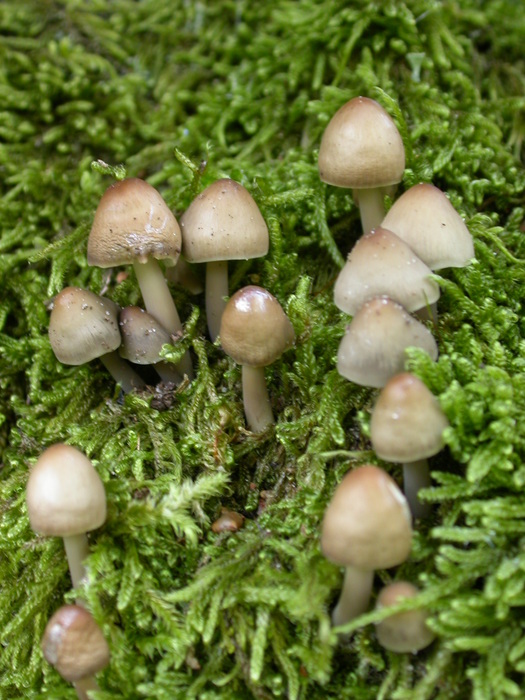
Vaninshingly small, brown, slimy, growing on a very old stump amid the moss. They lack the striations typical of a Mycena. Hygrocybe are not found on wood, Psathryella are not slimy... it is most likley a Psilocybe, Conocybe, or Stropharia, but I really don't have any guesses beyond that. They are best identified as prototypical LBJs: little, brown, indistinguishable from one another, and so small that no one really cares.
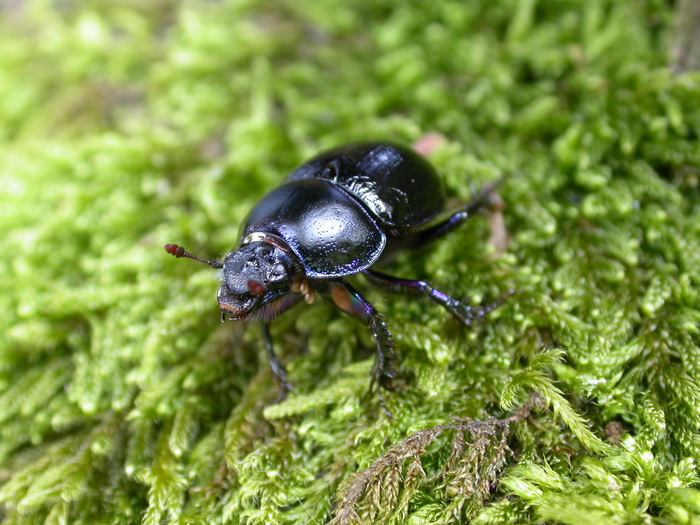
The stump was inhabited by more than mushrooms. Big black beetles of this type were all over the Veluwe. I have given up any hope of figuring out exactly what kind it is. The number of beetle species and the subtlety of their distinction far, far exceeds the problem space of mushroom identification.
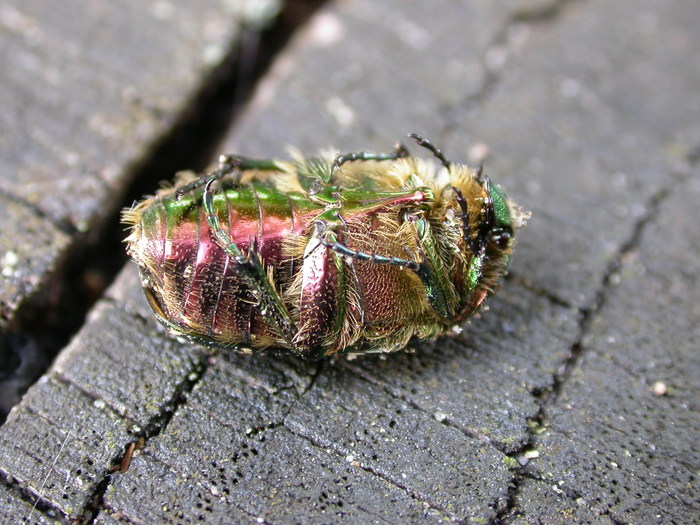
This beetle was walking around, looking reasonably spry, before I picked it up. I think it is playing dead rather than actually dead, but it's hard to tell. In any case it allows a good photo of th colors on his underside.
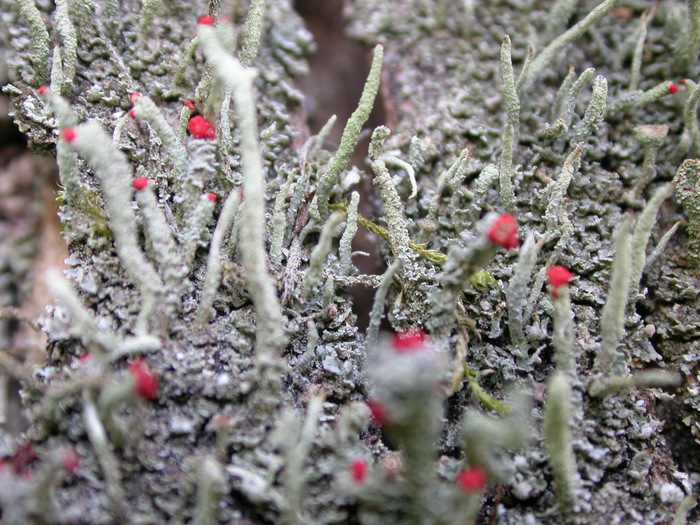
Known in Dutch simply as rood bekermos
(red cup moss
), this pretty little lichen was another resident of the stump. They were tiny and the camera couldn't decide where to focus, but I like the texture of this shot.
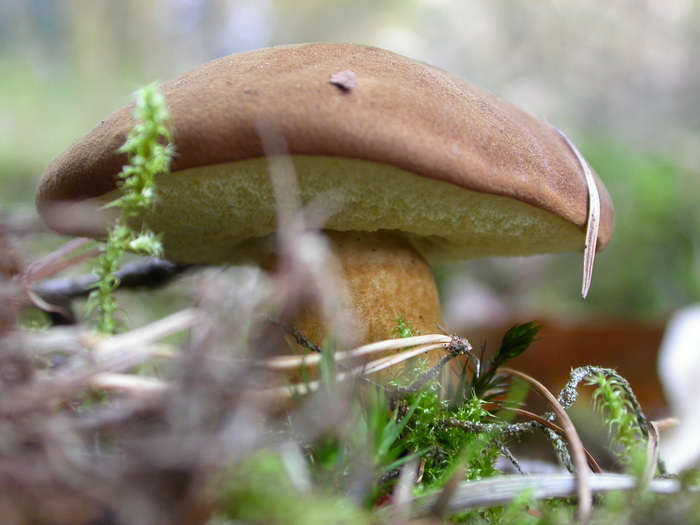
Big, brown, Boletaceae. Most likely Xerocomus badius, the chestnut bolete, due to its chestnut-brown cap, pale yellow pores, smooth stalk, and distinct gap between pores and stalk.
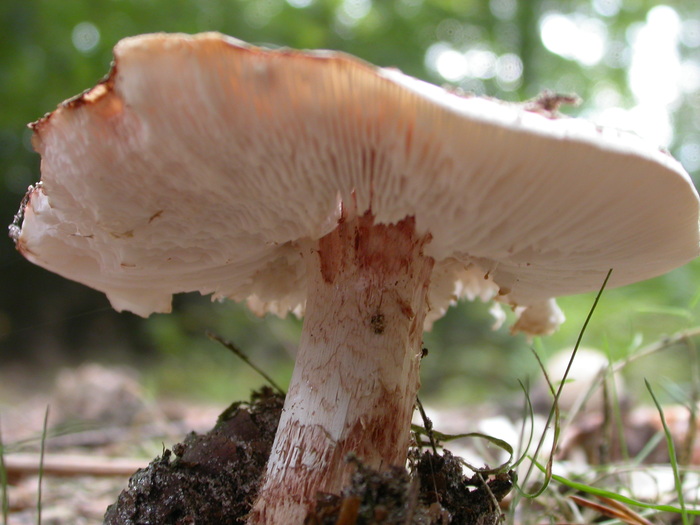
A look underneath one of the older, beaten examples from this group. The reddening of damaged areas of the stalk is clear here, although the veil appears to be entirely gone.
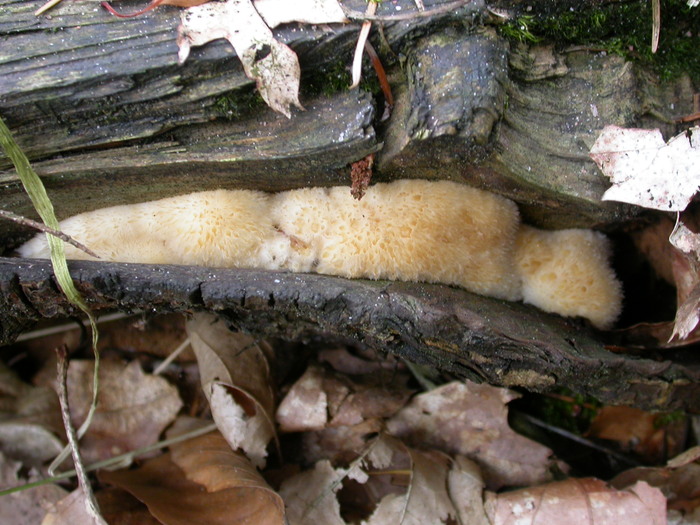
This looks like a baby seal stuffed itself into a log, but it is more likely a kaaszwam
or cheese mushroom.
There are photos of Oligoporus ptychogaster that look exactly like this photo, but it could be a Spongiporus species as well.
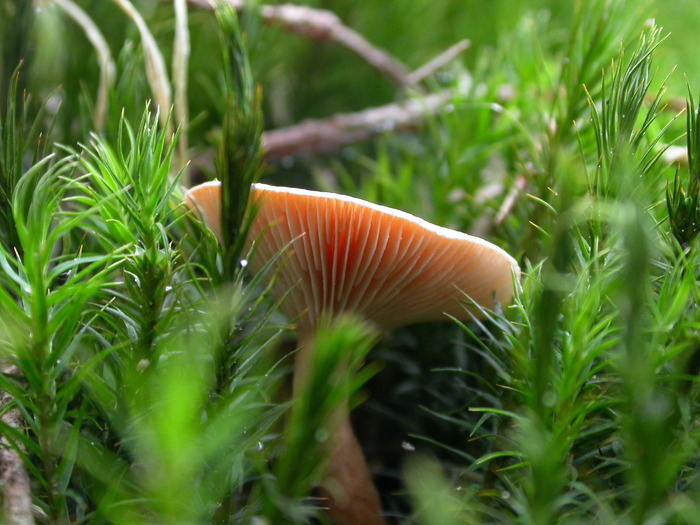
This could be a diminutive example of Hygrophoropsis aurantiaca. the false chanterelle
, but it looks rather pale and small for that species.
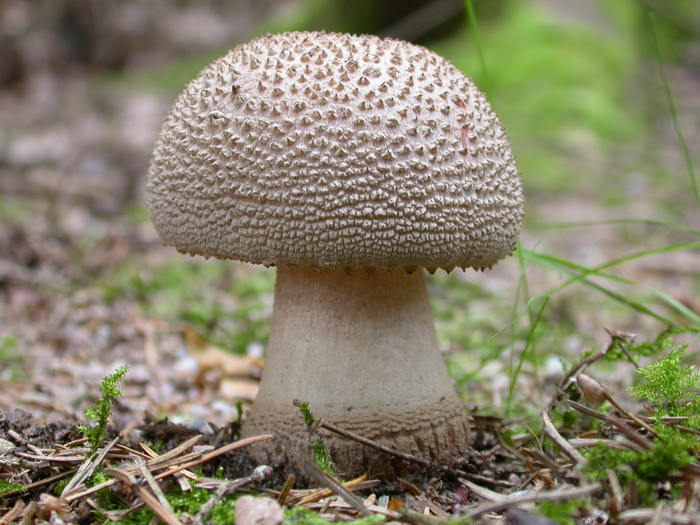
Another example of a blushing Amanita, which I would also call A. rubescens. Notice that it is much stockier than the previous examples, though. This may be because one of the two of them are actually a different species, or that both of them are actually a different species, or that the species is simply variable.
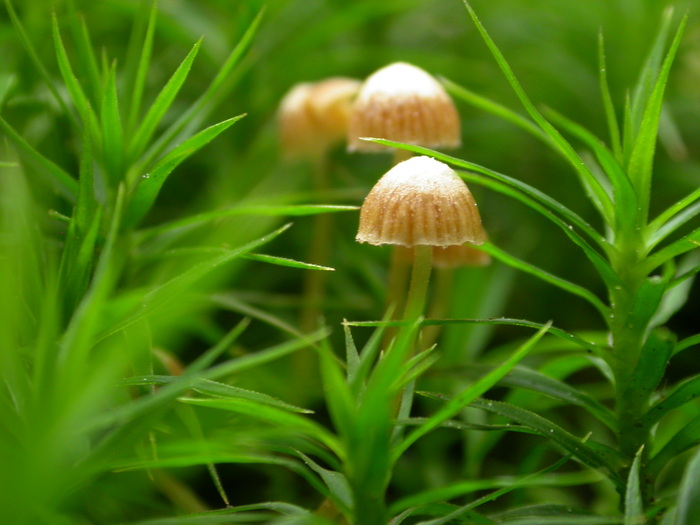
Probably a Mycena, though possibly in the genus Rickenella or even Marasmius. The mushrooms in this photo are about 2-3 mm in diameter.
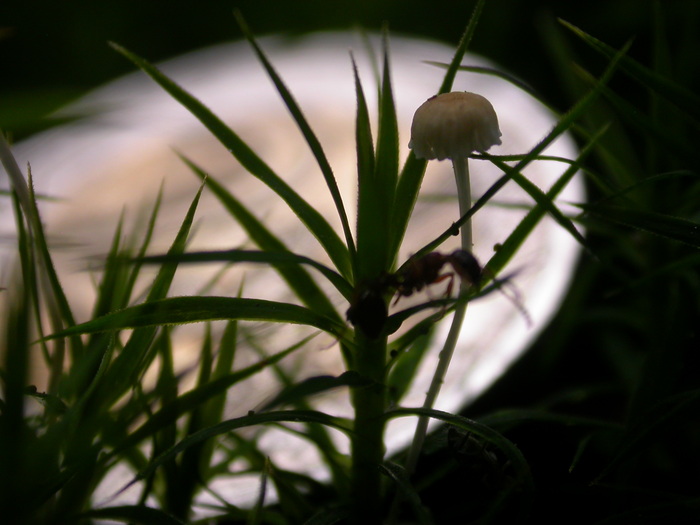
This photo gives a good sense of scale: the ant in the foreground, and the two euro piece in the background.
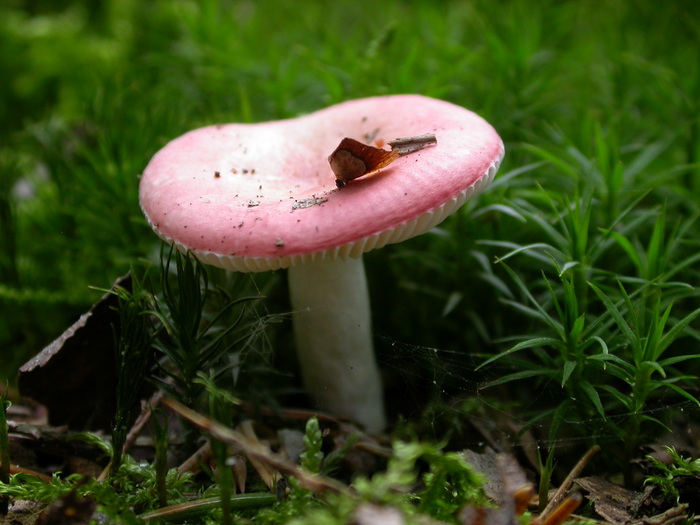
The book shows a picture of a nearly identical mushroom in nearly identical moss, and lists the species as Russula drimeia, but then describes the species as being 7-10 cm in diameter. This little one was scarcely 2 cm across. In the 2 cm category it lists Russula versicolor and Russula fragilis, although versicolor is pictured in pale colors with a very indented cap, and fragilis is pictured in purple. Russulas are not considered a beginners genus, in part because their obvious characteristics (like color and size) can vary quite a lot within a species. I did not notice the cobweb below this tiny mushroom until I saw it in the photo.
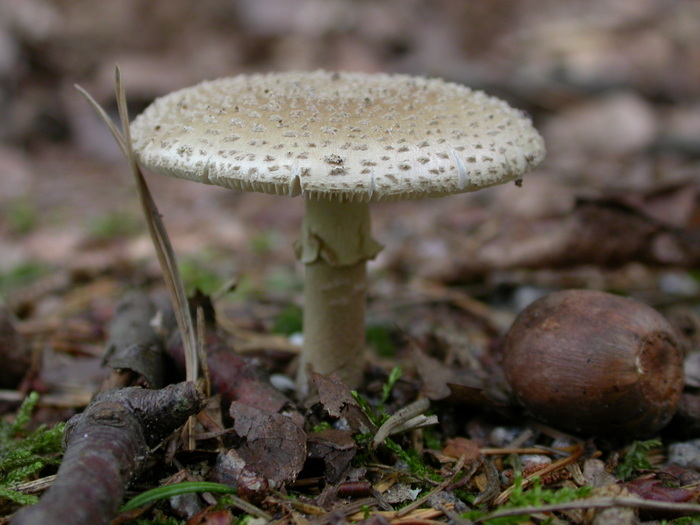
If this were a larger mushroom, I would guess it was Amanita panterina - but note the acorn and the fir needles in the picture. It also lacks the striated edge typical of many Amanitas. but its skirt-like striated ring confidently put it in the genus.
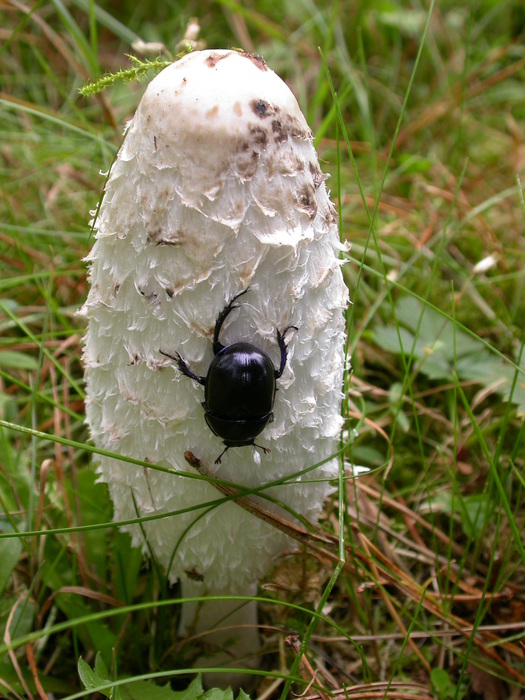
Normally I would brush aside this big beetle and pick a beautiful, large Coprinus comatus such as this one. But, we are still in the Veluwe, and the beetle gets the meal this time. I had originally thought this was another example of the same kind of beetle that is pictured above, but a close look at the photo shows that their antennae are quite different, placing them almost certainly in different species, perhaps different families entirely.